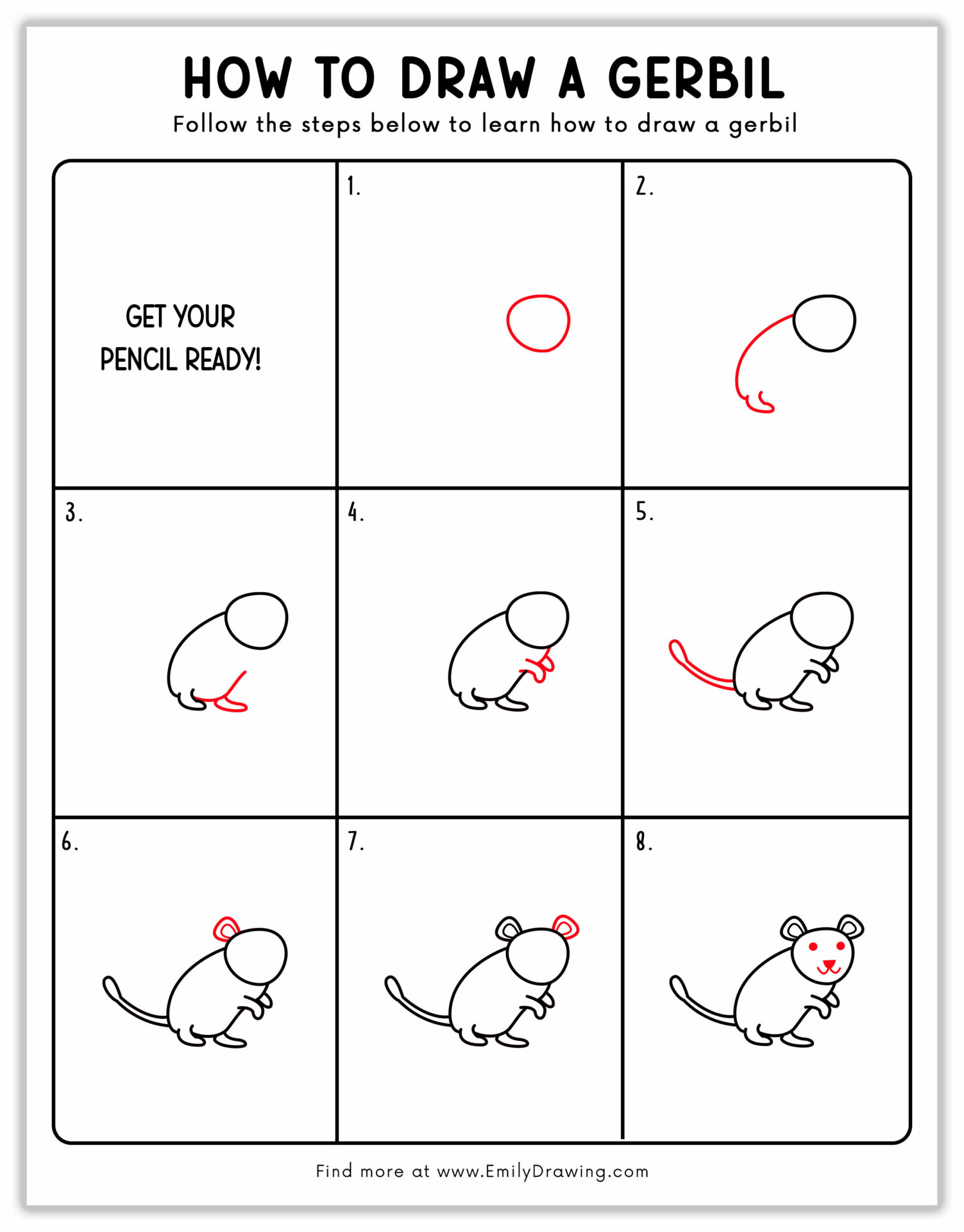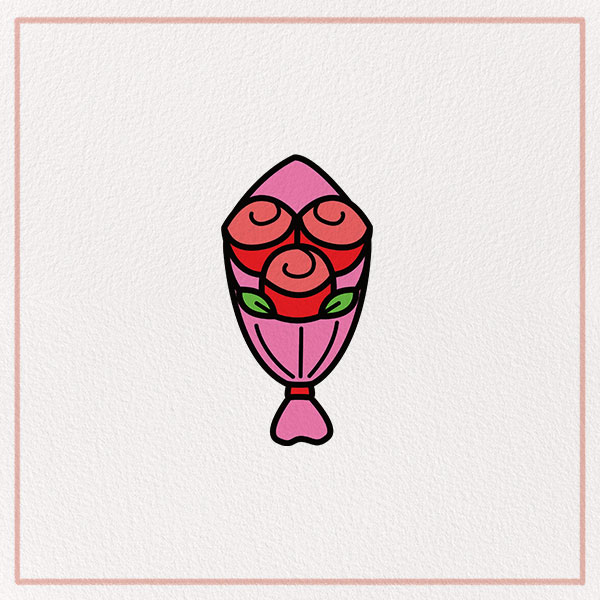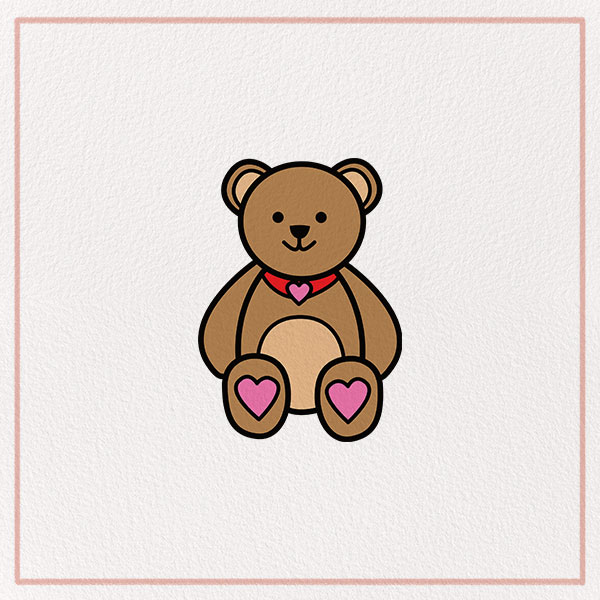Hello, and welcome to another tutorial by Emily Drawing! Today’s tutorial is all about drawing the gerbil! If you’re interested in other small mammals too, you might also enjoy our guide on how to draw a guinea pig! We’ll go through nine easy steps to draw this little animal.
Gerbils are about the size of mice—if you’re curious, check out our step-by-step mouse drawing tutorial—and they usually grow 6 to 12 inches long and 2 to 3 ounces. Their tails make up about half of their total length.
On the other hand, baby gerbils are tiny, and most consider them to be around the length of the last joint on a small finger. They weigh only about 3 grams, but they’ll reach 20 to 25 grams when they’re weaned, similar in growth patterns to small rodents like mice. Gerbils are considered adults when they’re around three to four months old.
It’s time to get started on this easy gerbil drawing tutorial. Grab your colored pencils or markers, and learn how to draw this small animal.
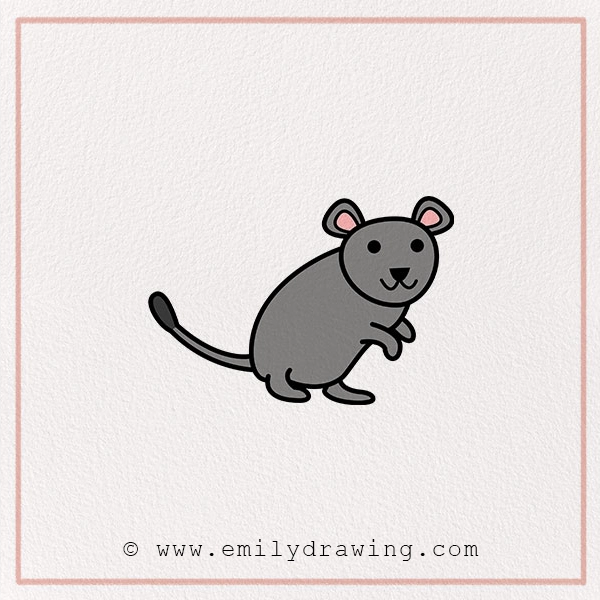
Materials:
- a piece of paper
- a pencil for the guiding lines and sketching
- an eraser
- a black Sharpie or a pen for the outlines
- markers or colored pencils for coloring
- our printable drawing guide (Join my Email List below to get this Tutorial)
Here are my RECOMMENDED Art Supplies!
- Crayola Coloring Set (140 Pieces – Mega Value!)
- 24 Colored Crayon Set
- A4 Printer Paper
- Crayola Coloring Pencils
- HP Home Printer with Instant Ink!
Time needed:
15 minutes.
How to Draw a Gerbil — Let’s get started!
Step 1 – Draw The Gerbil’s Head
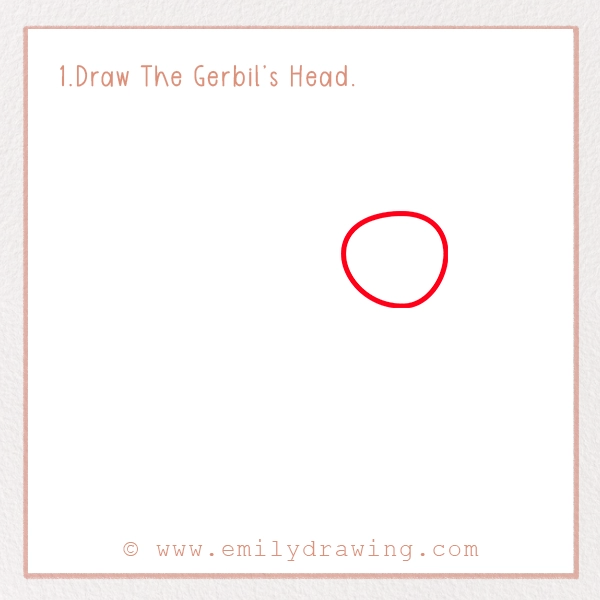
Start by drawing a circle for the gerbil’s head. This is a good way to practice drawing round shapes. Gerbils have short heads with big eyes and ears, which is probably why many find this animal adorable.
Step 2 – Draw The Gerbil’s Backside
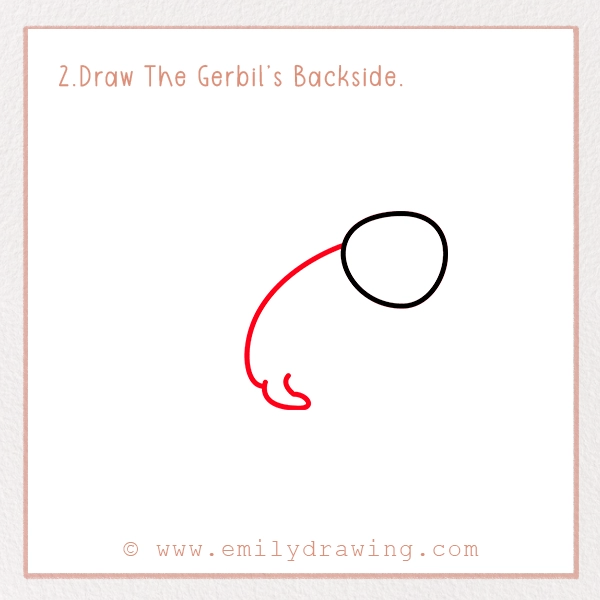
The next step is to draw the gerbil’s backside. You’ll draw a curved line that leads down to the hind leg and foot. Once you complete the foot, leave the space open for the next step. Fun fact: Gerbils have long hind legs that can be used for digging and communicating. They also stand on their hind legs when they’re curious, alert, or startled.
Step 3 – Draw The Gerbil’s Hind Leg and Belly
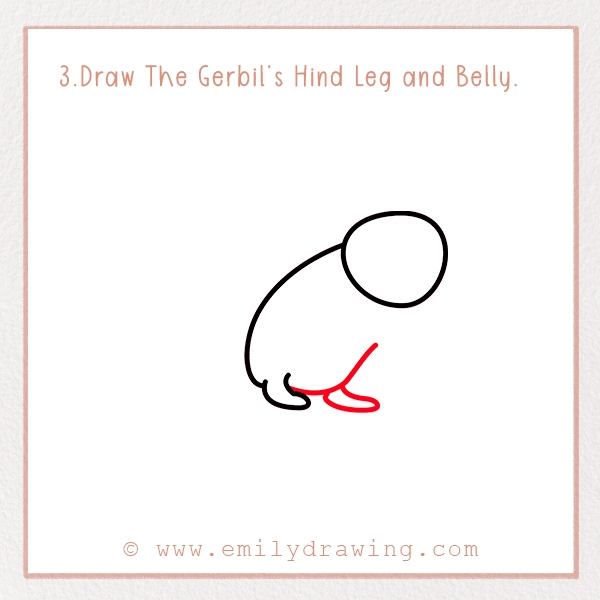
Now, you’ll draw the gerbil’s second hind leg, as well as its belly. Start by drawing the belly, which is a line that curves outward and then moves upward toward the chest. Then, add the hind leg. The hind leg should look like it’s somewhat hidden behind the belly.
Step 4 – Draw The Gerbil’s Front Legs
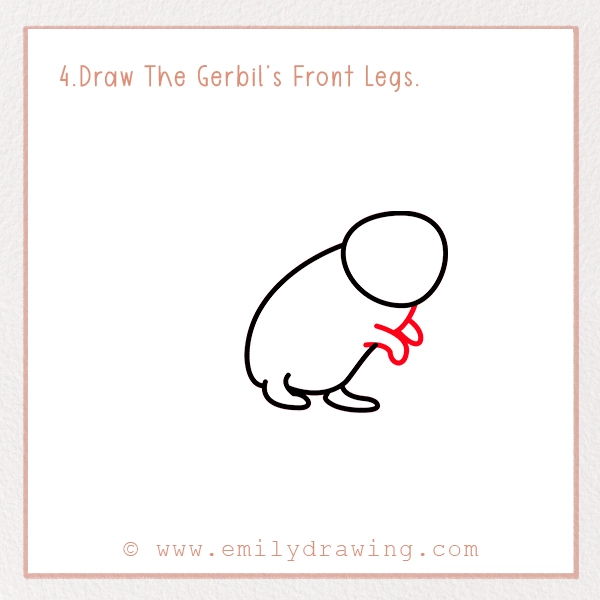
The next step is to draw the chest, leaving a small space open for the first front leg. The second front leg should be somewhat hidden behind the chest. With this step, the body shape is complete. Note: this is a side view of the gerbil, which is why certain legs are hidden behind other body parts.
Step 5 – Draw The Gerbil’s Tail
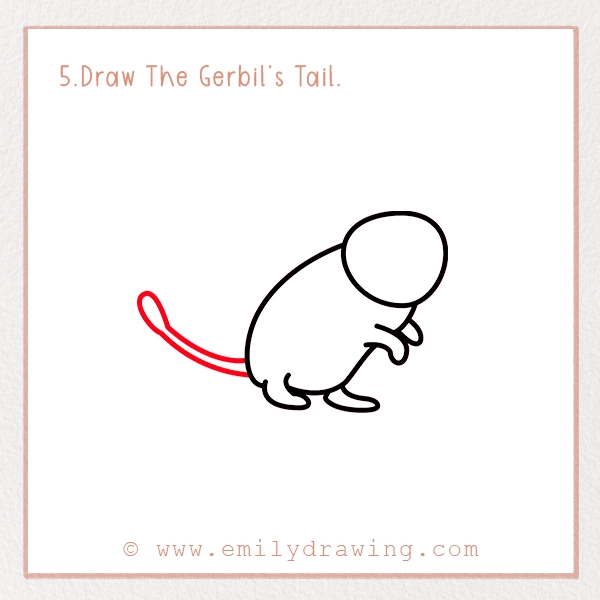
Drawing the tail is a very easy step, as you’re only adding a long, narrow shape to the gerbil’s backside. The tail is used for balance, cooling, storing fat, and sending warning signals.
Step 6 – Draw The Gerbil’s First Ear
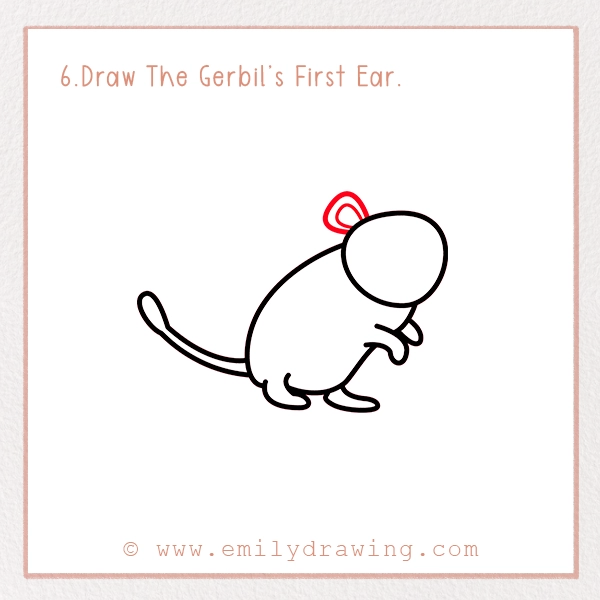
To draw the first ear, simply add a round shape to one side of the head. You’ll also add a similar shape inside the ear. This way, you can identify the gerbil’s inner and outer ear.
Step 7 – Draw The Gerbil’s Second Ear
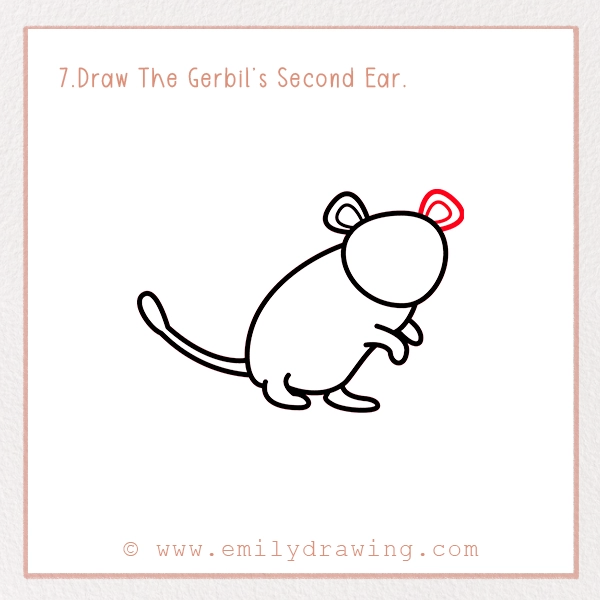
The second ear is similar to the first ear, only you’re adding it to the other side of the gerbil’s head. Gerbils have decent low-frequency hearing, with frequencies between 1 and 4 kHz. They also have a hearing range of around 100–60,000 Hz. However, gerbils don’t rely on hearing for communication.
Step 8 – Draw The Gerbil’s Face
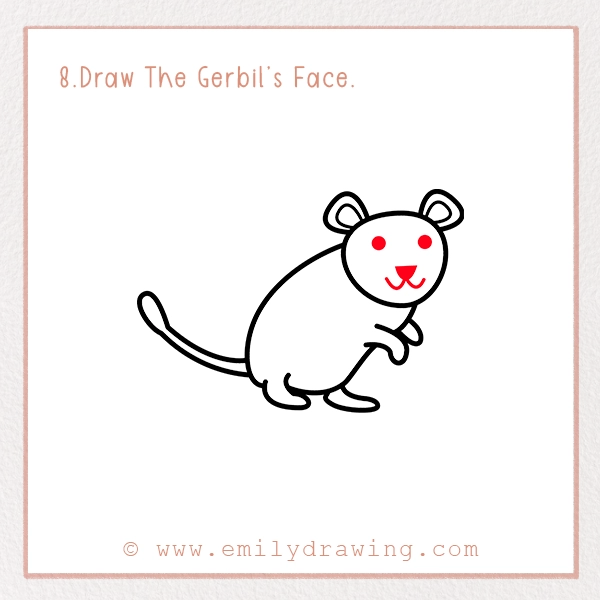
Now, it’s time to add the gerbil’s face. We decided to go with a more adorable style to draw a cute gerbil, starting with two dots for their large eyes. The nose is an upside-down rounded triangle, and the mouth is connected to form a smile, similar to other animals. Did you know that gerbil’s eyes are on the sides of their heads? This is so they can watch for predators and warn others.
Step 9 – Color In Your Drawing!

One of the best steps of your tutorial is coloring your drawing! On our attached page, we colored our gerbil gray with pink inner ears. The tail is a darker shade of gray, and the other details are black. You want to color the background as well, so you can create the scenery you have in mind. For example, you may want to draw a gerbil thriving in the desert, or maybe you’d rather draw a pet gerbil in its large enclosure. You have complete control over your drawing!
Pin it now, Draw later!
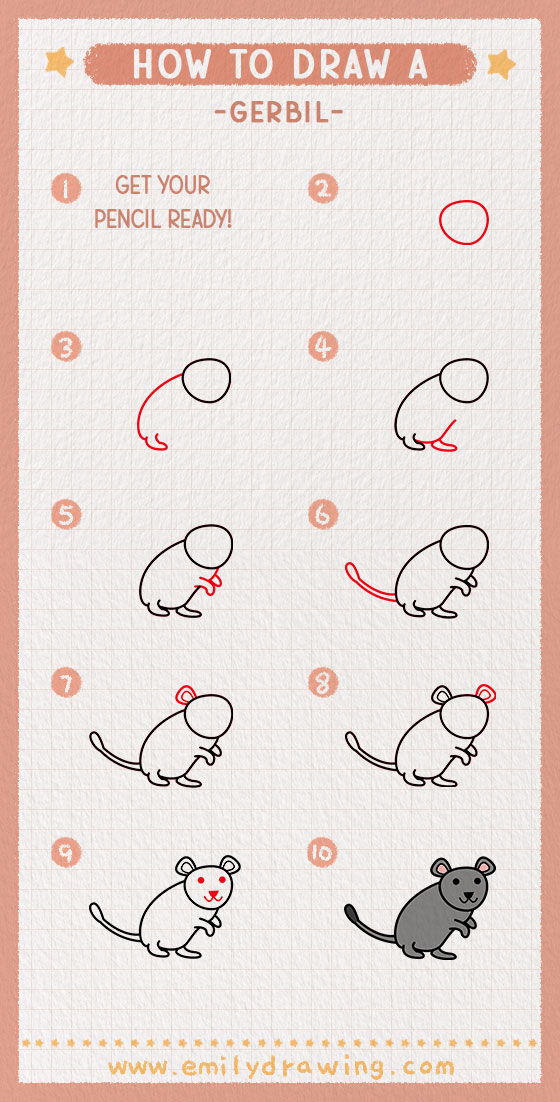
Interesting Facts About The Gerbil
In the wild, gerbils can be found in deserts and semi-arid regions of Africa, Asia, and India. However, pet gerbils can be found in various locations, including Mongolia, Northeastern China, and Eastern Europe. Of course, many in the United States also keep gerbils as pets.
Additionally, gerbils enjoy constructing burrows with multiple chambers for hiding, nesting, and storing food. They can dig burrows up to 1.7 meters deep and 6 to 8 meters long. As a pet, they require ample space to dig burrows in their enclosure.
Did You Know?
- Gerbils rapidly thump their hind legs to send a warning signal to others. They also thump their hind legs after mating.
- Gerbils also use their tails to communicate, beating them against the ground to send a warning to others.
- In captivity, a gerbil’s diet consists of high-quality pellets with small amounts of fresh fruit and vegetables. This includes apples, broccoli, carrots, and peas. Occasional treats may include lean meat, beans, and boiled egg.
- In the wild, gerbils mostly eat grains and grasses, as well as leaves, herbs, and insects. Dry seeds are usually an emergency food source.
- Gerbils can resist heat and dehydration, which is why they do well in areas like deserts.
- These small rodents are very social in the wild and in captivity. As a pet, it’s best to keep 2 or more gerbils. Gerbils kept in groups tend to live healthier, longer lives.
- In the wild, gerbils live about 2 to 3 years due to the environment. In captivity, gerbils live about 3 or 4 years, sometimes longer, with proper care.
We hope you had fun with our “How To Draw A Gerbil” tutorial. You’re welcome to share your drawing with us by posting on social media with #EmilyDrawing! If you’re interested in drawing other animals, check out the tutorials on our site. We offer a variety of easy drawing tutorials, including a fun tutorial on drawing a guinea pig.
